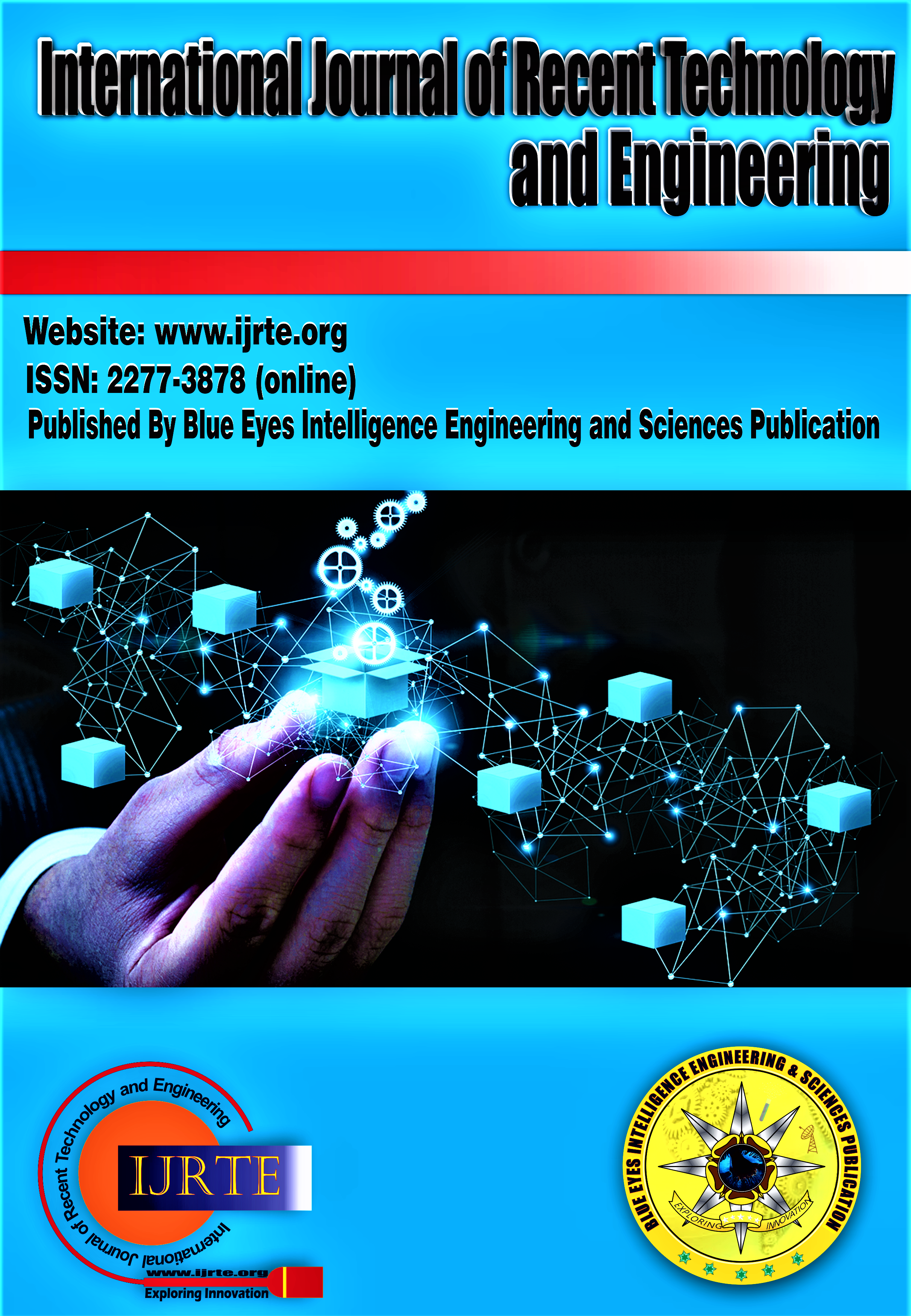The Estimation of Battery State of Charge using Corny Network
Main Article Content
Abstract
State of charge (SOC) estimation of lithium-ion batteries has been extensively studied and the estimation accuracy was mainly investigated through the development of various battery models and dynamic estimation algorithms. All battery models, however, contain inherent model bias due to the simplifications and assumptions, which cannot be effectively addressed through the development of various conventional computation and intelligent computation. Consequently, some existing methods performed battery SOC estimation using conventional and intelligent computation have not very accurate to predict the SOC battery characteristics. There some drawbacks in employment deep learning to estimate SOC battery, such as complicated algorithm or network, over fitting and so on. The proposed method, the Corny architecture has narrow layers design. This design has low cost computation and prevent over fitting. The result shows the accuracy of method is very high. The predicted and targeted values are almost merged in a single line. The RMSE and MAX error indexes are very low. That the accuracy of the model is acceptable. The electric vehicle battery can estimate to life longer and more reliable to perform mobility task. Finally, this method also show the accuracy of estimation SOC battery of electric vehicle can be solved by narrow learning layers.
Downloads
Article Details
Section

This work is licensed under a Creative Commons Attribution-NonCommercial-NoDerivatives 4.0 International License.
How to Cite
References
R. M.Kassim, W. A. W.Jamil, andR. M.Sabri, “State-of-Charge (SOC) and State-of-Health (SOH) Estimation Methods in Battery Management Systems for Electric Vehicles,” 2021 IEEE Int. Conf. Comput. ICOCO 2021, pp. 91–96, 2021. https://doi.org/10.1109/ICOCO53166.2021.9673580
T. W.Sun andT. H.Tsai, “A Battery Management System Using Interleaved Pulse Charging with Charge and Temperature Balancing Based on NARX Network,” IEEE Trans. Circuits Syst. I Regul. Pap., vol. 69, no. 4, pp. 1811–1819, 2022. https://doi.org/10.1109/TCSI.2021.3136862
W.Xu, J.Xu, J.Lang, andX.Yan, “A Multi-Timescale estimator for lithium-ion battery state of charge and state of energy estimation using dual h infinity filter,” IEEE Access, vol. 7, pp. 181229–181241, 2019. https://doi.org/10.1109/ACCESS.2019.2959396
S.Liu, X.Dong, andY.Zhang, “A new state of charge estimation method for lithium-ion battery based on the fractional order model,” IEEE Access, vol. 7, pp. 122949–122954, 2019. https://doi.org/10.1109/ACCESS.2019.2932142
R.Ranjith Kumar, C.Bharatiraja, K.Udhayakumar, S.Devakirubakaran, K. S.Sekar, andL.Mihet-Popa, “Advances in Batteries, Battery Modeling, Battery Management System, Battery Thermal Management, SOC, SOH, and Charge/Discharge Characteristics in EV Applications,” IEEE Access, vol. 11, no. October, pp. 105761–105809, 2023. https://doi.org/10.1109/ACCESS.2023.3318121
W.Han, C.Zou, C.Zhou, andL.Zhang, “Estimation of Cell SOC Evolution and System Performance in Module-Based Battery Charge Equalization Systems,” IEEE Trans. Smart Grid, vol. 10, no. 5, pp. 4717–4728, 2019. https://doi.org/10.1109/TSG.2018.2867017
W.Zhang, L.Wang, L.Wang, C.Liao, andY.Zhang, “Joint State-of-Charge and State-of-Available-Power Estimation Based on the Online Parameter Identification of Lithium-Ion Battery Model,” IEEE Trans. Ind. Electron., vol. 69, no. 4, pp. 3677–3688, 2022. https://doi.org/10.1109/TIE.2021.3073359
Z.Xi, M.Dahmardeh, B.Xia, Y.Fu, andC.Mi, “Learning of Battery Model Bias for Effective State of Charge Estimation of Lithium-Ion Batteries,” IEEE Trans. Veh. Technol., vol. 68, no. 9, pp. 8613–8628, 2019. https://doi.org/10.1109/TVT.2019.2929197
Q.Sun, H.Lv, S.Wang, S.Gao, andK.Wei, “Optimized State of Charge Estimation of Lithium-Ion Battery in SMES/Battery Hybrid Energy Storage System for Electric Vehicles,” IEEE Trans. Appl. Supercond., vol. 31, no. 8, pp. 1–6, 2021. https://doi.org/10.1109/TASC.2021.3091119
S.Jafari andY. C.Byun, “Prediction of the Battery State Using the Digital Twin Framework Based on the Battery Management System,” IEEE Access, vol. 10, no. November, pp. 124685–124696, 2022. https://doi.org/10.1109/ACCESS.2022.3225093
L.Alzubaidi et al., Review of deep learning: concepts, CNN architectures, challenges, applications, future directions, vol. 8, no. 1. Springer International Publishing, 2021. https://doi.org/10.1186/s40537-021-00444-8
M. A.Hannan et al., “Deep learning approach towards accurate state of charge estimation for lithium-ion batteries using self-supervised transformer model,” Sci. Rep., vol. 11, no. 1, pp. 1–13, 2021. https://doi.org/10.1038/s41598-021-98915-8
M. H. R.Miranda, F. L.Silva, M. A. M.Lourenço, J. J.Eckert, andL. C. A.Silva, “Particle swarm optimization of Elman neural network applied to battery state of charge and state of health estimation,” Energy, vol. 285, no. October, p. 129503, 2023. https://doi.org/10.1016/j.energy.2023.129503
M.Li, C.Li, Q.Zhang, W.Liao, andZ.Rao, “State of charge estimation of Li-ion batteries based on deep learning methods and particle-swarm-optimized Kalman filter,” J. Energy Storage, vol. 64, no. September 2022, p. 107191, 2023. https://doi.org/10.1016/j.est.2023.107191
M.Wu, Y.Zhong, J.Wu, Y.Wang, andL.Wang, “State of health estimation of the lithium-ion power battery based on the principal component analysis-particle swarm optimization-back propagation neural network,” Energy, vol. 283, no. August, 2023. https://doi.org/10.1016/j.energy.2023.129061
M. H.Sulaiman, Z.Mustaffa, N. F.Zakaria, andM. M.Saari, “Using the evolutionary mating algorithm for optimizing deep learning parameters for battery state of charge estimation of electric vehicle,” Energy, vol. 279, no. June, p. 128094, 2023. https://doi.org/10.1016/j.energy.2023.128094
P.Kollmeyer, C.Vidal, M.Naguib, andM.Skells, “LG 18650HG2 Li-ion Battery Data and Example Deep Neural Network xEV SOC Estimator Script,” vol. 3, 2020.
Sakile, R., & Sinha, Dr. U. K. (2020). Estimation of State-of-Charge and State-of-Health of Batteries by using Different Adaptive Techniques. In International Journal of Innovative Technology and Exploring Engineering (Vol. 9, Issue 3, pp. 2221–2225). https://doi.org/10.35940/ijitee.c8975.019320
Surendar, M., & Pradeepa, P. (2020). Future Challenges in State of Charge Estimation for Lithium-Ion Batteries. In International Journal of Engineering and Advanced Technology (Vol. 10, Issue 1, pp. 215–223). https://doi.org/10.35940/ijeat.a1789.1010120
Raja, T. A. S., Lakshmi, N. S., Kumar, K. S., & kumar, A. N. (2020). Parallel Battery Management System for Electric Vehicles. In International Journal of Recent Technology and Engineering (IJRTE) (Vol. 8, Issue 6, pp. 4697–4700). https://doi.org/10.35940/ijrte.f9561.038620
Kamalakar, Dr. G., & Kamala, Dr. K. (2023). New Dimension in Higher Education in India. In Indian Journal of Social Science and Literature (Vol. 1, Issue 4, pp. 27–33). https://doi.org/10.54105/ijssl.e1027.061422
Ghatole, S., & Zodpe, H. (2019). FPGA Based Engine Control Module for Fuel Injection System. In International Journal of Innovative Technology and Exploring Engineering (Vol. 8, Issue 10, pp. 3888–3892). https://doi.org/10.35940/ijitee.j9902.0881019





